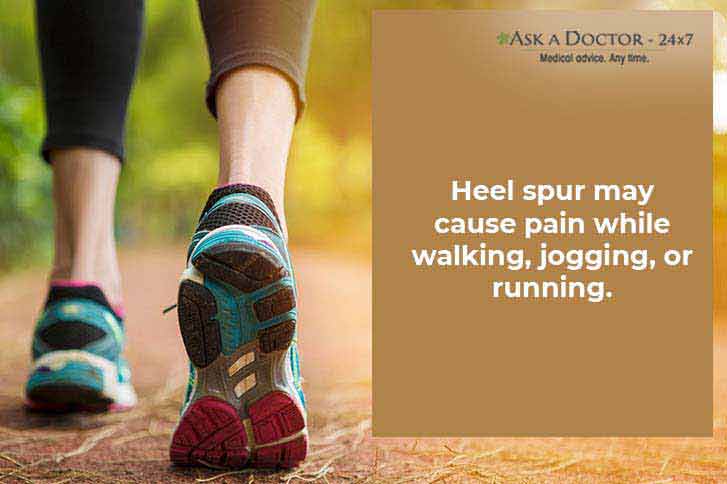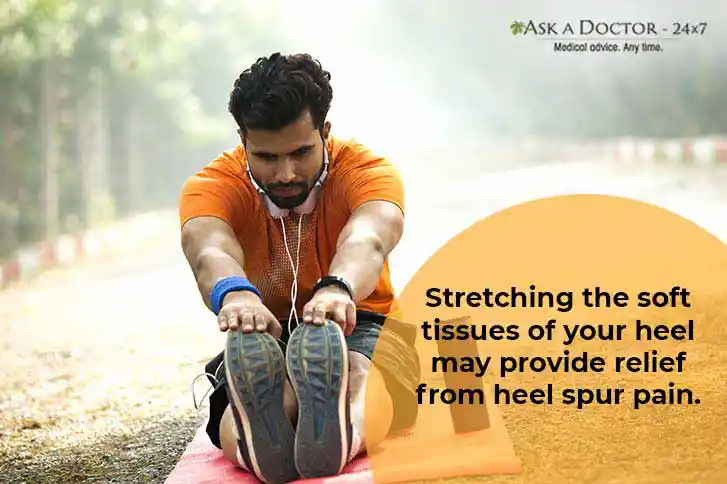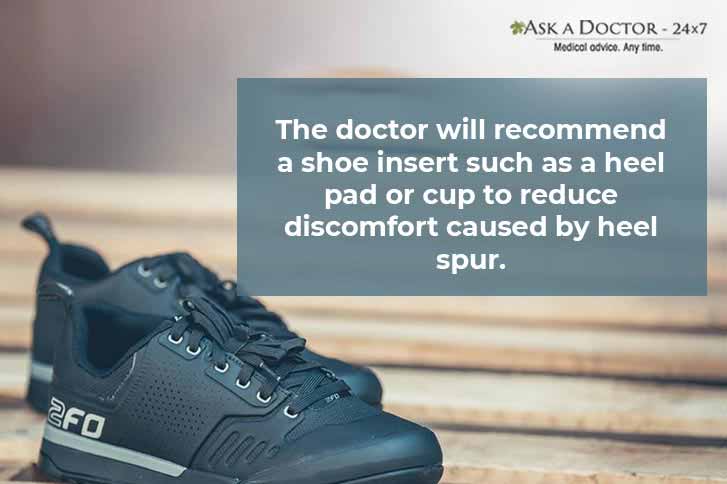Does Your Heel Ache Frequently? May Be You've Got A Heel Spur!
Does your heel ache after a long period of rest or when you get out of your bed in the morning? If yes, you may have a heel spur.
A heel spur, also known as calcaneal spur, is a bony outgrowth under your heel. This occurs when calcium builds up and causes your bone to protrude. Although you can’t actually see it on your heel because it’s just about a quarter of an inch in length, but it causes a lot of discomfort during walking or running. Give a read to recognize the symptoms and know what you can do to heal the health of your heels and get relief.
What happens when you have heel spurs?

Heel spur causes sharp pain as one moves from a resting position. This pain becomes dull later on. You may feel pain:
- When pressure is applied to the heel
- After getting up in the morning
- When standing up after sitting for a long duration
- When walking, jogging, or running, especially on hard surfaces
If you feel any type of pain in your heel, you should contact an orthopedic doctor immediately.
What you can do to heal your heels and get relief?

Treatment varies from person to person, so it is important to ask your doctor which treatment method is most suitable for you. Depending on your condition, doctor may recommend painkillers or alternate therapies such as acupuncture.
You can also be advised to try some conventional treatments such as:
Gentle stretching

Stretching the bottom surface of your foot and calf muscles gently can provide relief from pain caused due to a heel spur. Here are the steps for self-stretching:
- Sit on an even surface and keep your knees straight
- Loop a towel around the foot and pull your toes towards your body
- Hold for 30 seconds and then relax
- Repeat this 5-10 times twice a day
Shoe inserts

Your doctor will recommend shoe inserts to relieve your pain. Shoe inserts are a heel pad or cup, or a doughnut-shaped orthodontic that helps reduce the discomfort by redistributing weight. These support, align and improve how your foot functions. Ask your orthopedic surgeon what type of shoe insert you need to wear.
Night splints

Most people sleep with their feet pointed down. This causes their plantar fascia to relax and is one of the reasons for morning heel pain. Wearing splint at night can prevent your ankle and heel tissues from tightening up while you are asleep. This is often useful in alleviating the severe pain that many people wake up in the morning with, and in breaking the cycle of pain.
Physiotherapy

If you have heel spur, you may contact a physiotherapist to get the symptoms relieved. The physiotherapist will recommend:
- Cold packs: Using cold packs for 15 minutes helps relieve pain. This can be done 3 to 4 times a day. Applying cold packs, especially after physical activity, is very helpful.
- Exercises: Your physiotherapist will design an exercise program according to your requirements. You may be asked to do exercises to stretch and strengthen your muscles and other soft tissues.
- Weight management: If you are overweight, losing weight may reduce the impact of your weight on the heel spur.
- Stop athletic activities: It is advisable to reduce or even stop activities that aggravate the pain. You may need to stop athletic activities that involve your feet pounding on hard surfaces such as running or step aerobics.
Once treatment is started, it usually takes 6 to 8 weeks to recover from a heel spur. If there is severe pain that does not subside with conservative treatments, your doctor may recommend surgery to remove the spur.
Wearing well-fitting footwear with shock-absorbent soles, choosing appropriate shoes for each physical activity, and performing warm-ups and stretching exercises before exercise and sporting activity may prevent formation of heel spurs.
For any further query consult an online orthopedic surgeon today!
Ask a Specialist
Recent Questions


